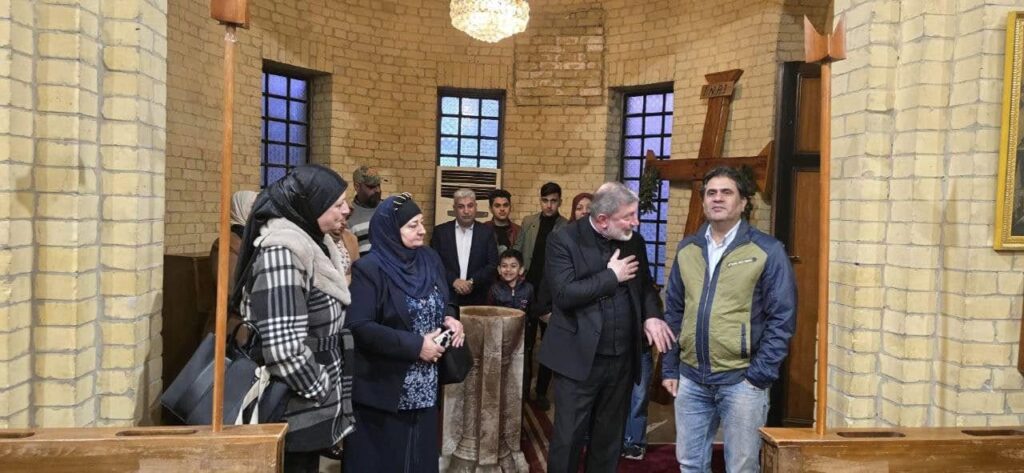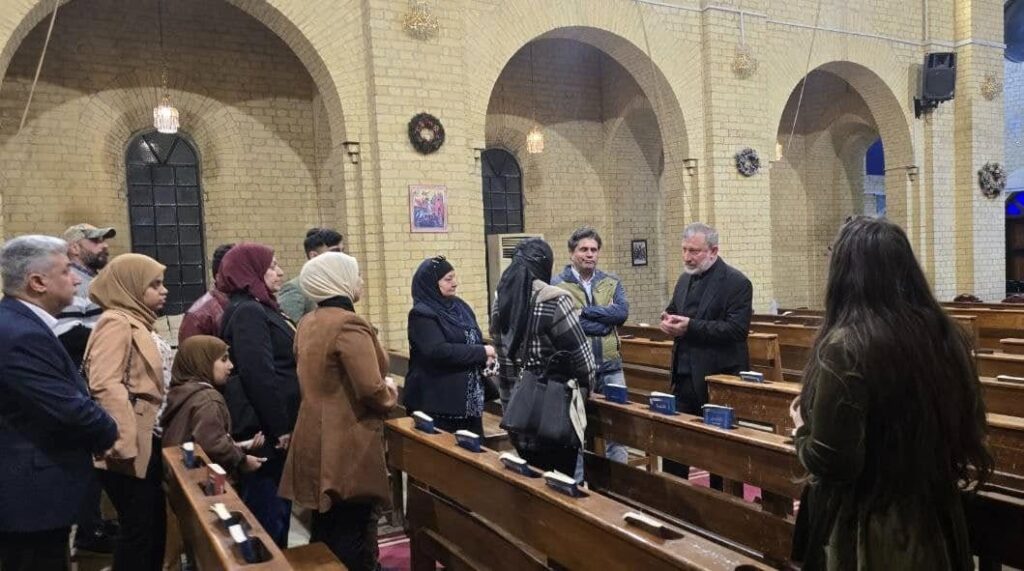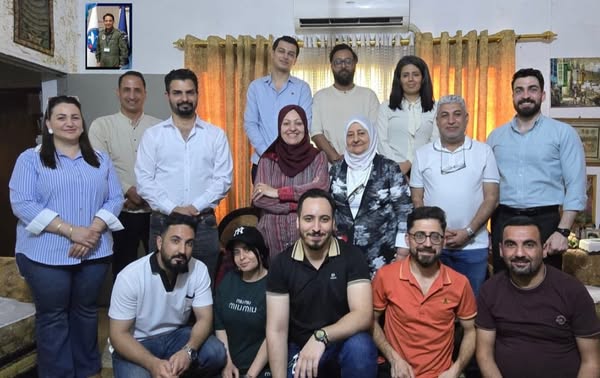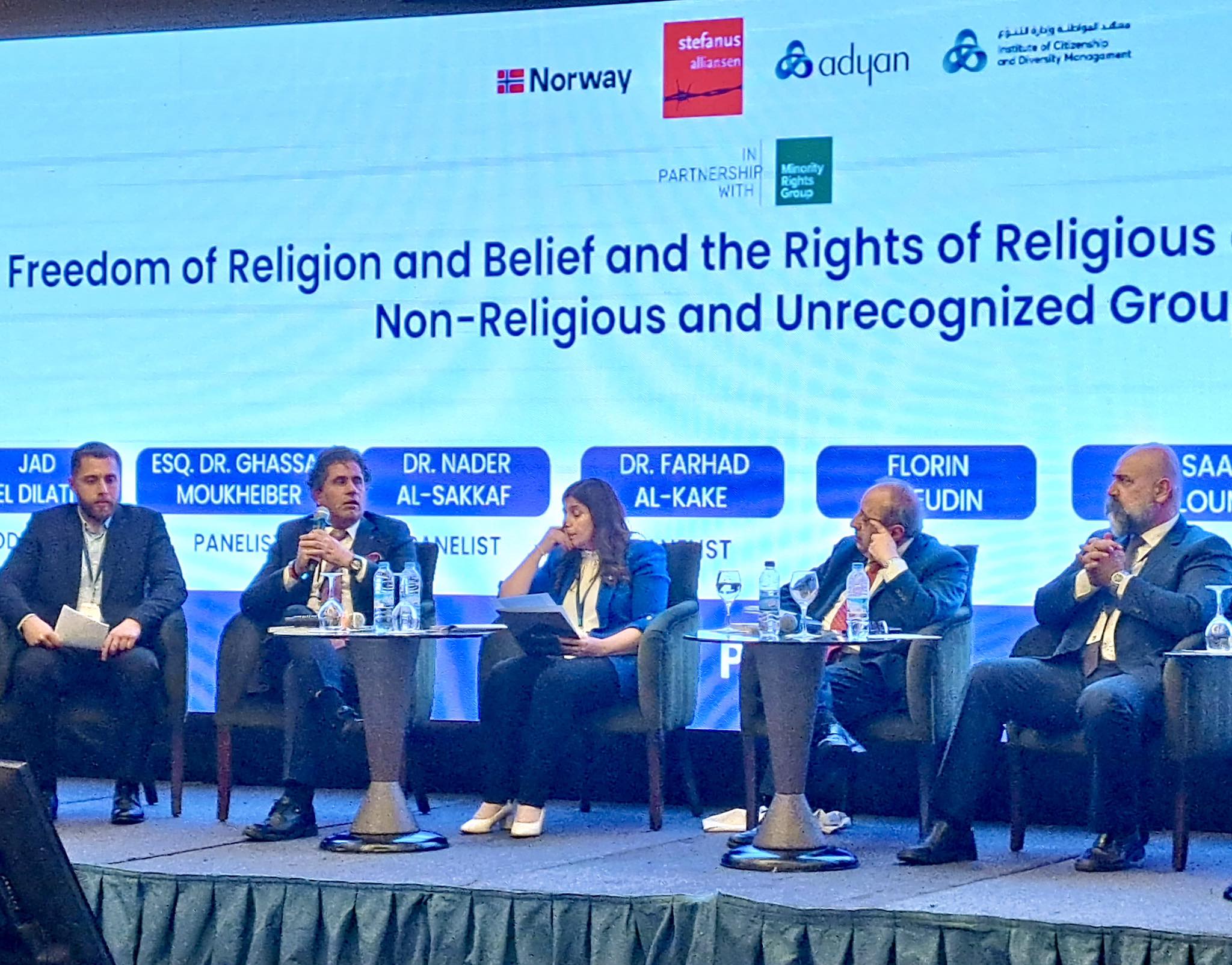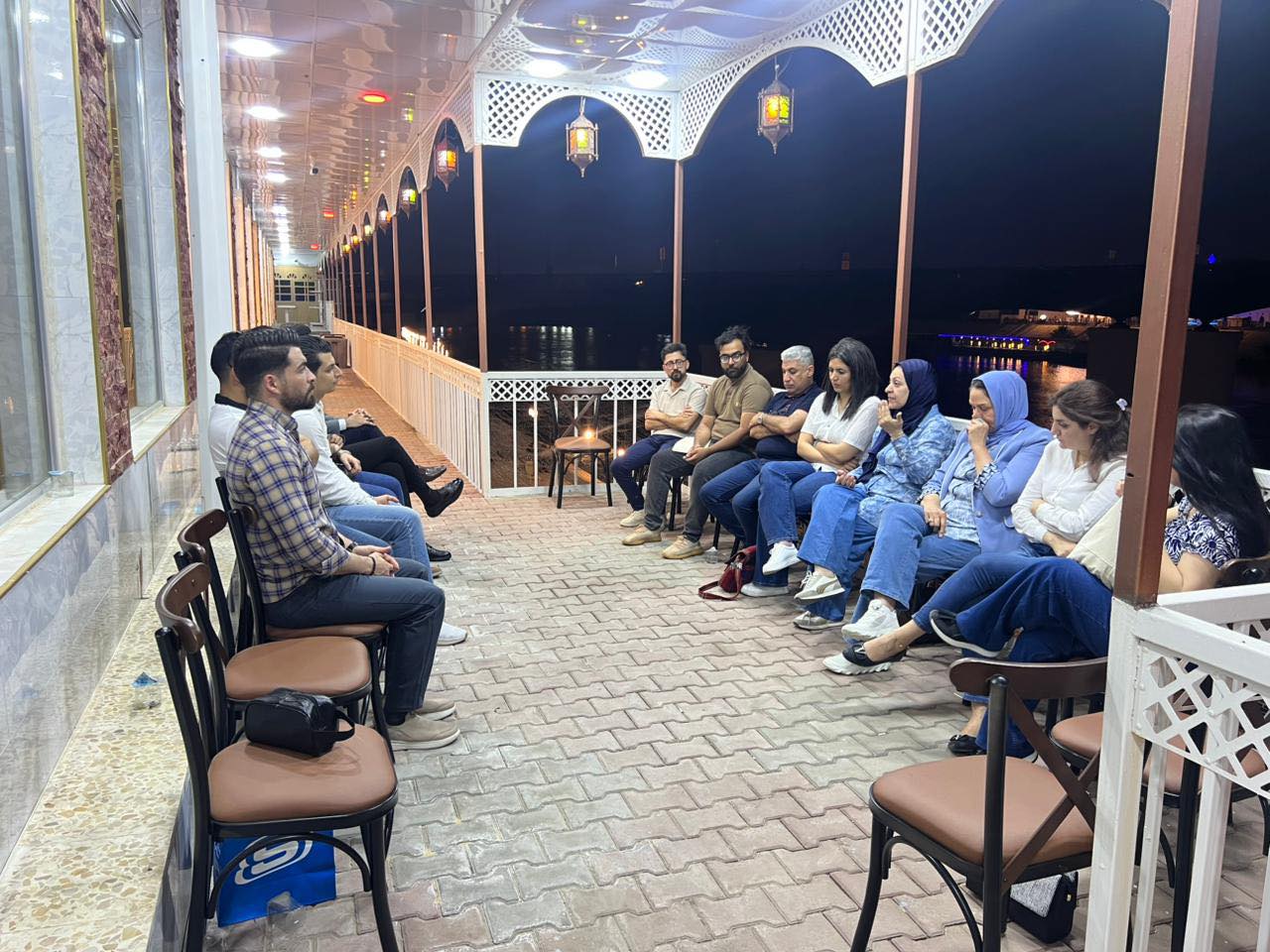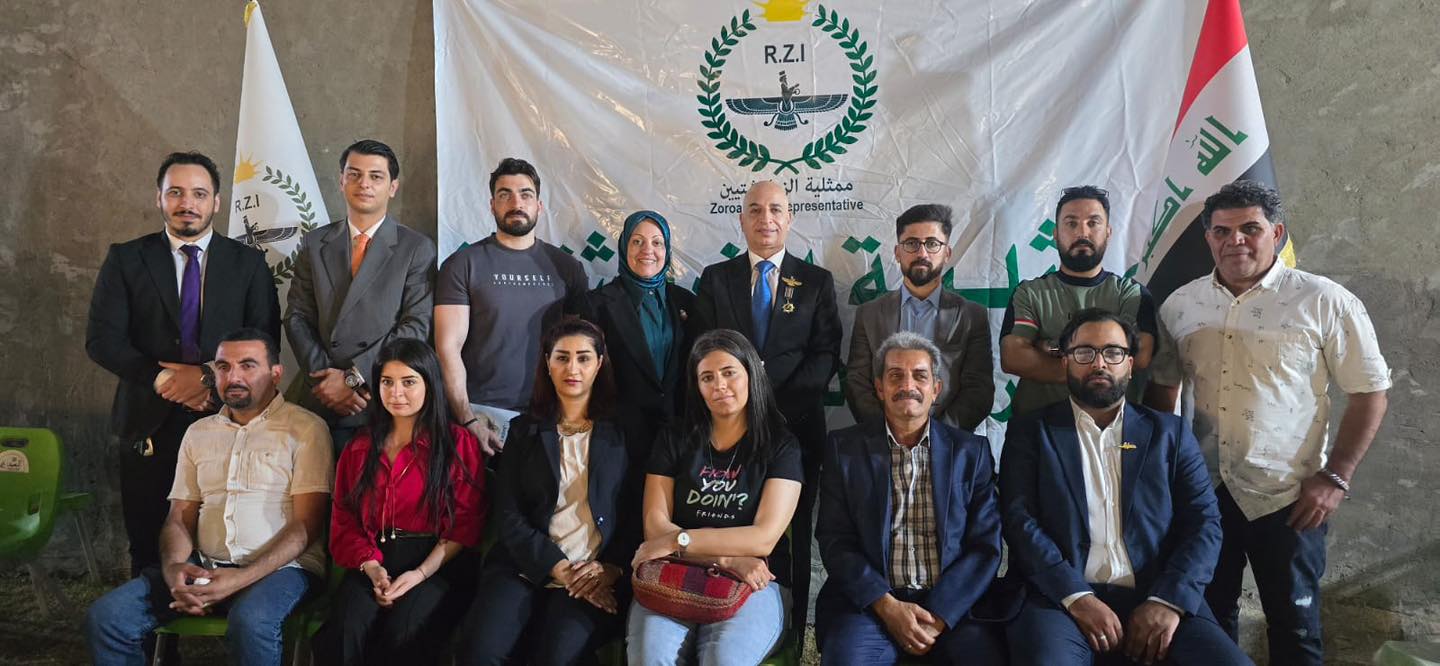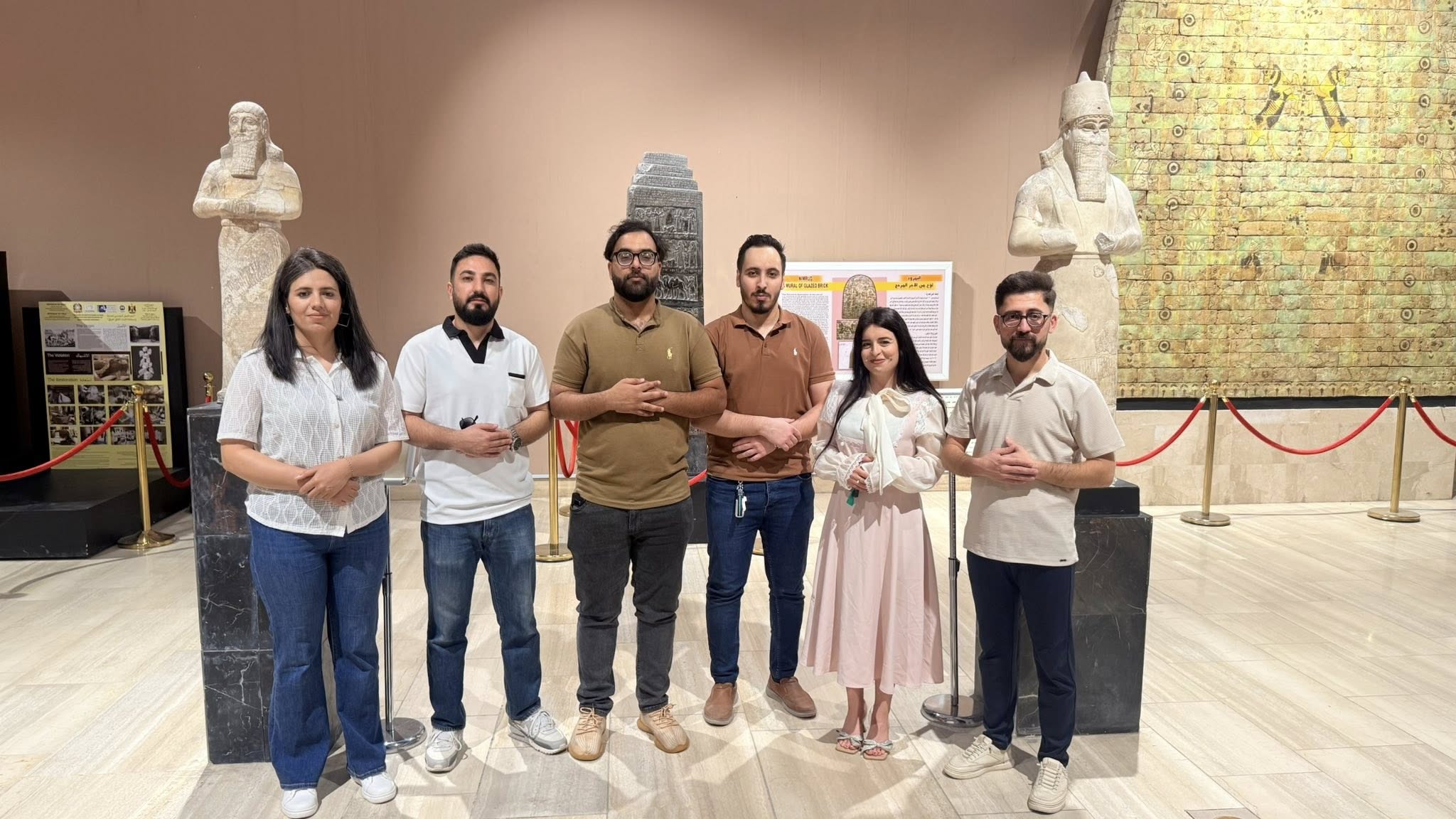On the occasion of Christmas and New Year’s celebrations, a delegation from the Citizenship Education Program at Masarat visited St. George’s Church (the Episcopal Anglican Church of St. George).
Father Faiz Bashir welcomed the delegation members. He was joined by several staff members from the church. After exchanging greetings for Christmas and the New Year, the delegation members provided an explanation of the Citizenship Education Program and its objectives, as well as details of the activities that included the cities of Baghdad, Karbala, Babylon, Kirkuk, Erbil, Sinjar, Duhok, and Zakho.
The delegation members presented Father Faiz with several handmade items from the women of the Citizenship Education camps, including special tablecloths featuring Christmas icons.
Tour of the Church and its Administrative Annexes
Father Faiz Bashir accompanied the delegation on a tour of the church, explaining its history, which dates back to 1936 and represents an architectural masterpiece in Baghdad.
The delegation members walked through a pedestrian corridor leading to an arched entrance surrounded by brick arches, with the entrance protruding forward and preceded by four steps leading up to the church, where the church floor is raised 60 cm above the surrounding area. Next to the church entrance, a bronze-colored plaque reads: “This is a holy land; enter it with prayer, respect, and humility. St. George’s Episcopal Anglican Church was built in 1936,” in both Arabic and English.
The design and construction were entrusted to British architect James Mollison Wilson, one of the key founders of modern architecture in Iraq at that time. The delegation members prayed with Father Faiz for the comfort of Iraq’s martyrs and the peace of its lands. They lit Christmas candles.
The church has an ancient structure and distinctive architectural design, covered externally with brick (jafqeem). The prominent columns jut out, and between each pair of columns are windows that overlook the outside, taking the shape of an arch adorned with stained glass. The church is characterized by its small size, consisting of the church building and some annexed buildings.
The entrance to the church is made of wood, with a black cross painted on it. Upon entering, there is a square space that opens into a circular front area, separated by an arched brick partition.
The repetition of the wide inner arches in the prayer hall forms an architectural solution for a multifunctional ceiling both internally and externally, and these arches act as sound breakers, representing local inspirations from the heritage of the country.
The delegation members learned about the details of the school annexed to the church, which was built using the latest technologies and serves a number of students from various components of Iraqi society, in addition to the clinic that provides free services to the local residents and employees. There are also administrative annexes for the church and a private library.
It is worth mentioning that Father Faezi Bashir is one of the founding members of the Center for Countering Hate Speech at the Masarat Foundation and has been an active participant in all of the foundation’s activities in Islamic-Christian dialogue.
